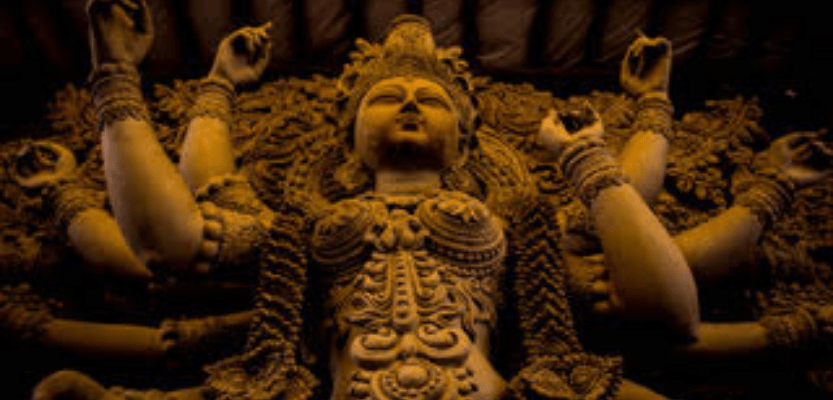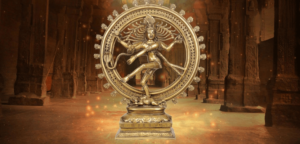Tadā draṣṭuḥ svarūpe ‘vasthānam.
- Tadā – then
- draṣṭuḥ – the Seer
- svarūpe – true nature
- avasthānam – abides
Then the Seer abides in his/her own essential nature.
The Indian scriptures provide many terms for our own essential nature: Citi, Pure Consciousness; Brahman, the Absolute; Atman, the Self of all; Puruṣa, the Seer. The yogic scriptures of India describe our essential nature as unconditioned Consciousness, the immortal light of Awareness, with no beginning or end, without form or substance, yet which empowers our minds, senses and bodies.
The Īśa Upaniṣad states:
In the heart of all things, of whatever there is in the Universe, is Brahman. He alone is the reality.
Similalry, the Kena Upaniṣad states:
That which cannot be expressed in words, but by which the tongue speaks—know that to be Brahman….
That which is not comprehended by the mind, but by which the mind comprehends—know that to be Brahman….
The Self, Brahman, the Absolute, Supreme Consciousness, Source, Pure Awareness, God: all are names for our essential nature.
The Tantric tradition of Kashmir Śaivism offers a unique description of the Absolute, Pure Consciousness, describing it as self-existing, self-luminous, and self-reflective (it knows itself as it is), unconditioned by anything outside of itself, and inherently formless. It is Awareness itself, complete and full, without need of external support, and empty of any form. This Awareness consists of a combination of two principles: prakāśa, that aspect which is self-luminous, empty of form, and self-existing; and vimarśa, that aspect which is self-reflective and knows itself as it is. These two principles exist together as one, inseparable, as the Divine Supreme Consciousness from which everything comes. Shavism refers to prakāśa as the Śiva or male aspect of Consciousness, and vimarśa as the Śakti or female aspect. Latent within Śakti are the Divine’s powers to create and become the universe. Shaivism calls these powers ichhā śakti (the power of will), jñāna śakti (the power of knowledge), and kriyā śakti (the power of action).
Have you ever wondered the Absolute created this universe? Śaivism offers a compelling description, detailing how Pure Consciousness makes its first move toward becoming something other than formless Consciousness. From its unconditioned state comes a subtle vibration (spanda) that becomes the first incident of subjectivity (a sense of “I-ness,” as opposed to a sense of that-ness) with a desire and intent to create the universe. This powerful sense of subjectivity is called the ichhā śakti by Shaivism. It is the Divine’s power of volition, intention, and the root of all subjectivity, for deities, humans, and all sentient beings. Evolving from this sense of intention, Consciousness becomes aware of its inherent power to minutely conceive of what it wants to create, which is the objective universe in all its detail. This power is the jñāna śakti, the Divine’s ability of complete knowledge, of cognizing its complete plan for creating the universe. Finally, from the jñāna śakti pulsates Consciousness’ power to shine forth the universe it has conceived of by becoming it in its many forms. This is the kriyā śakti, the Divine’s power of action, of being able to do or become anything. These inherent powers of Consciousness exist in every being within the created universe, because every sentient being is a manifestation of Consciousness and its powers. The ichhā, jñāna and kriyā śaktis exist in their pure, uninhibited forms in what Śaivism calls the Pure Creation. The first conscious beings created in this universe are pure manifestations of these powers and have fundamental roles in guiding our universe. They are called deities, gods and goddesses, angels and archangels. They are named differently in different traditions. These exalted beings are aware of the apparent dual, subject-object nature of their reality, but their experience is always one of unity, of one Consciousness creating and becoming the objective world.
When Consciousness devolves to create the material world, it limits itself to appear as something other than Pure Consciousness. It does this through its māyā śakti. Māyā is the power that allows Consciousness to contract so that it can appear as a dual universe of subject and object. Through it, individual beings are created who no longer experience the unity Awareness of Consciousness. Instead, they feel limited, separate, and imperfect, and view the world as other. The powers of ichhā, jñāna and kriyā śakti remain in these individual beings, but vastly reduced. Once Consciousness contracts through the māyā śakti, we perceive the world through our minds, which most of us believe is the limit to our awareness. We believe in and identify with our thoughts and live in a world of duality. Māyā is the veil that hides our true nature from ourselves.
Exercise
The Shaivite view of how Divine Consciousness becomes the universe is subtle and difficult to grasp. One way to understand it is to see how the Divine powers of will, knowledge, and action work in our own lives. We are each a microcosm of the Absloute and embody all of its powers. Let’s start with the ichhā śakti. Sit in a comfortable meditative posture and contemplate something you want to happen in your life. Feel the power of your intention, the power of your own will, wishing it to come about. Sit with this feeling of intention, your desire for something to occur, recognizing the śakti of your own will. This is a manifestation of the Divine’s ichhā śakti. Now watch how you use your mind and imagination to bring your intention about. Visualize what you want to occur in intricate detail. In doing so, you have just used your jñāna śakti. Finally, watch as you take your first active step to fulfill your intention. Note the power you have to act on what you wish to occur. This is your kriya śakti. Through this contemplation, you can get an idea of how you help create your own world through your ichhā, jñāna and kriyā śaktis. Now you have an inkling of how God does the same.








